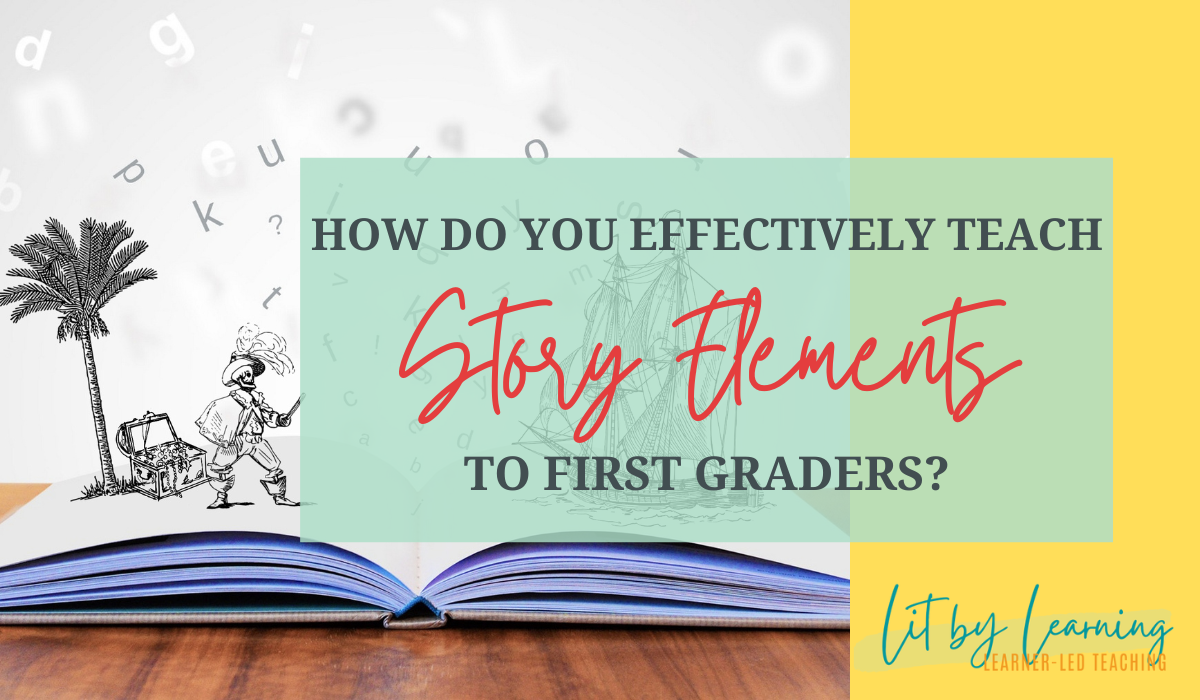Elementary teachers, are you looking for ideas to teach your students the elements of a story? Read how to find out the answer to the question “What is literary elements to a story?” and get ideas for teaching key story elements in a fun, engaging way.
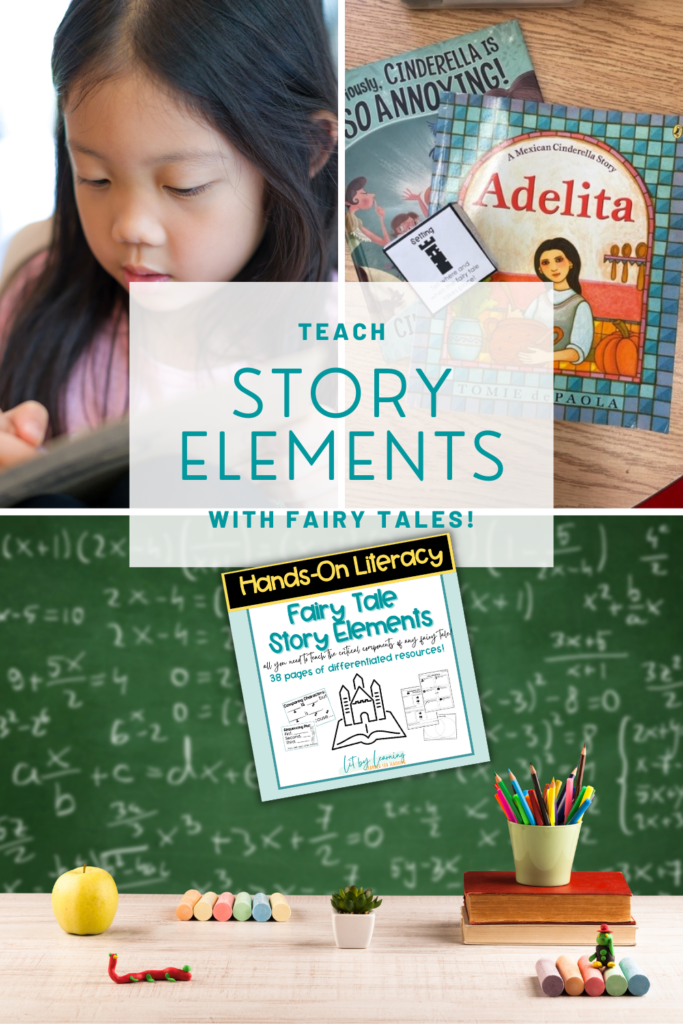
What are the literary elements of a story?
The literary elements of a story are the key components of any effective story. While there is some variation in what teachers consider the story elements meaning, the most commonly agreed-upon components are:
- Characters: Who is in the story? Why are the central or main characters? Who are the secondary characters?
- Setting: Where and when does the story take place?
- Plot: What happens in the story? For early elementary students, the plot is usually explained as containing the problem & solution OR the beginning, middle and ending.
- Point of View: Who is telling the story? Who is the narrator? Note: I usually introduce this to first graders later on, focusing the first dive into story elements on characters, setting and plot.
Depending on the specific type of narrative text, there are other common elements that you can highlight as being shared across the genre. For example, fairy tales have an element of magic. Fables, on the other hand, all result in a lesson or a moral at their conclusions.
How do I introduce elements to a story?
There are many effective strategies for introducing story elements to your young readers, but I prefer a student-led inquiry-type investigation. That is to say, I love to encourage students to arrive at the key elements to a story on their own.
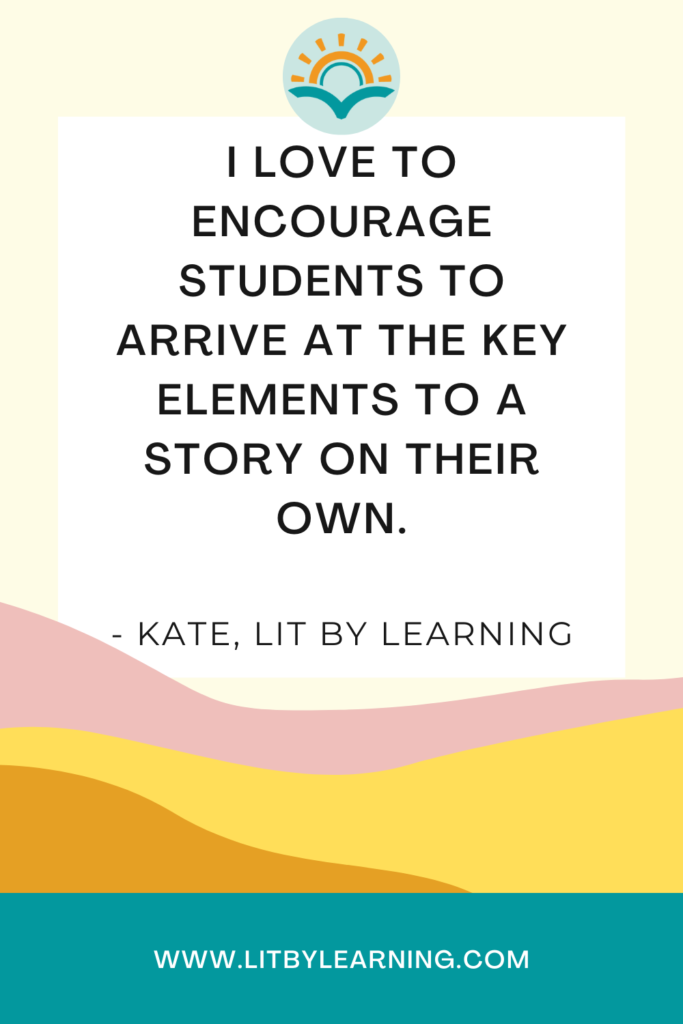
To do this, I frame up some essential questions like:
- What do all stories have in common?
- What makes all stories the same?
- What makes a story a story?
I then invite students to think of their favorite story of all time. It can be the plot of a movie, a book, a familiar fairy tale or a TV show. After providing a chance for the students to discuss, we visit the essential questions again in a classwide discussion.
Students will share out commonalities between their story and their partners. Someone might say, for example, “They both had people in them!” I then pose a follow-up question to the group: “Did everyone’s story have people in it?” This invites discussion: do all stories need to have people in them? Or can some have animals?
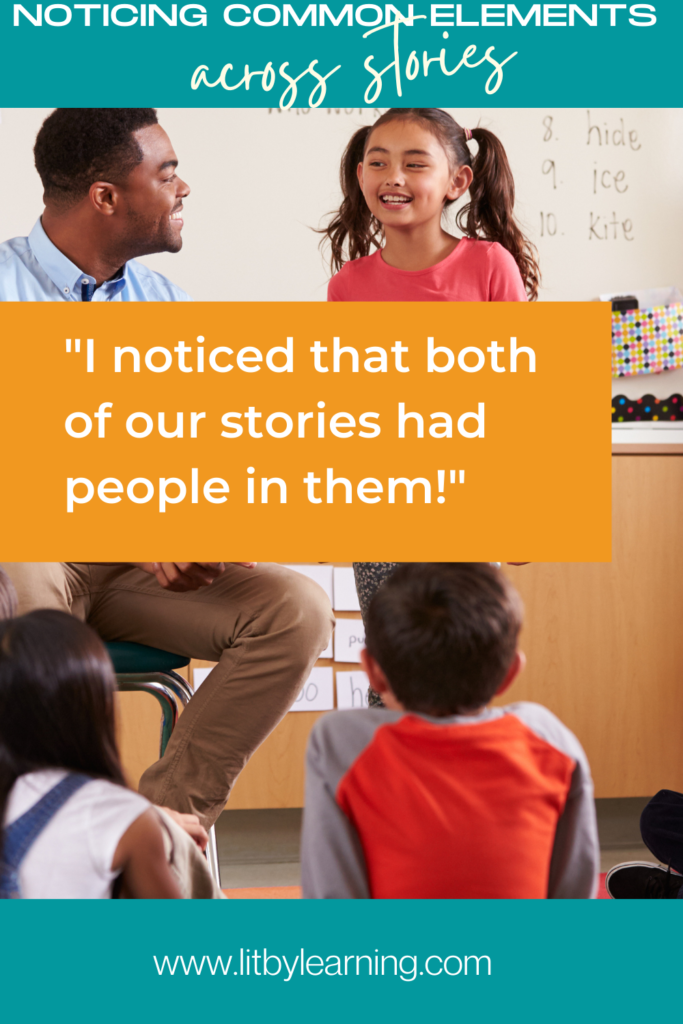
I scribe students’ thoughts on a poster as more and more students share out their observations. When a student shares something that a classmate has already said, I draw connections between their ideas. It can sound something like this: “Oh, your story had something go wrong just like Rita’s story” or “Hmmm, that sounds a lot like what Ben shared about having an interesting ending.”
There are no wrong answers in this discussion time: the goal is simply just a rich conversation about what stories have in common.
The goal is simply just a rich conversation about what stories have in common.
Bridging students’ observed elements to a story with academic vocabulary
In a separate lesson, I then introduce students to the academic vocabulary that corresponds with their ideas, filling in any gaps if necessary. For first graders, I ensure that students learn the academic terms: characters, setting, problem, resolution, beginning, middle, end. Again, I usually introduce narrator and point of view later on in a story inquiry unit.

We then retell our favorite stories, perhaps with a different partner, and try to name the elements. Here are some sentence starters I use to guide students:
- The characters in this story are…
- The setting of this story is…
- The problem in the story is…
- The resolution is when…
- At the beginning…
- In the middle…
- At the end…
Identifying story elements in read-alouds
From there, we work with story elements within the context of our unit’s read-alouds. In our inquiry into storytelling, we explore three types of tales: fables, fairy tales, and legends/porquoi tales. Each time we read a new story, we either discuss the components verbally, complete a worksheet for story elements, or do an elements of a story activity. I’ve assembled the story element resources I’ve created over the years – check them out on TPT here!
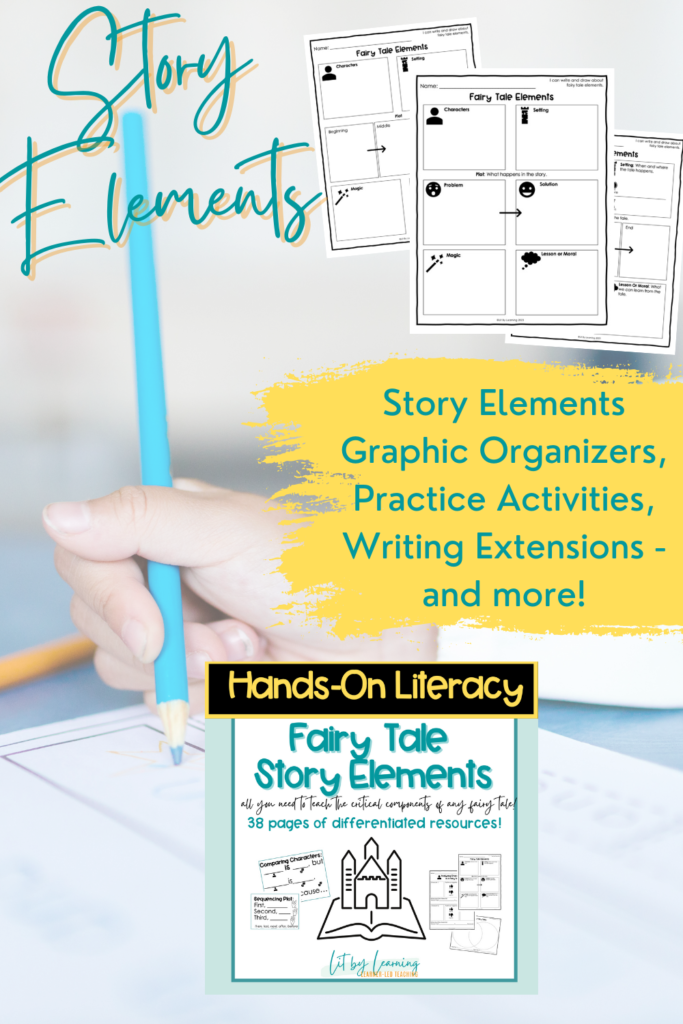
From identifying story elements to comparing tales
Following Bloom’s Taxonomy, once students can identify and describe story elements, they can then tackle a more difficult task: comparing and contrasting stories based on their components. Not only is this next step standards-based, but it provides elementary students with a meaningful way to put their academic vocabulary to work as they precisely discuss similarities and differences across stories. Here are student statements we would hope to hear at this point in the unit:
- Both stories have the same plot, but they are in different settings.
- Even though these tales had different characters, the problem and resolution were the same.
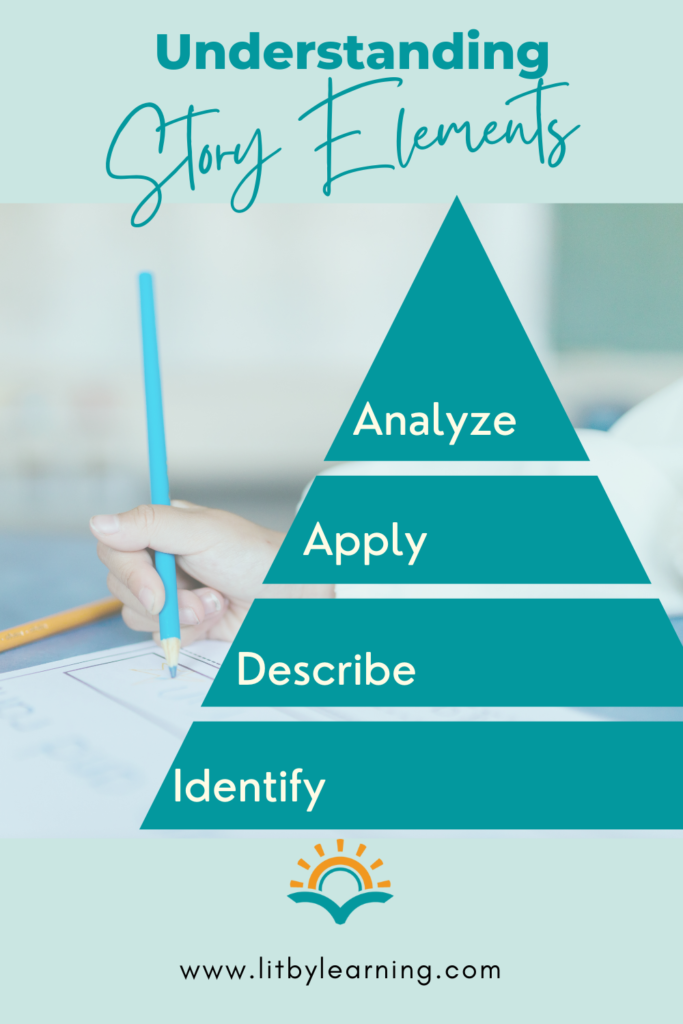
Taking story elements a step further: authoring stories containing all key components
One of my favorite ways to end a story element inquiry is to invite students to plan, draft and write their own tale using the story elements as building blocks. I’ve had students create fairy tale spin-offs to their own versions of legends and it is so powerful to see them incorporating the story elements into their own writing! Blog post about this coming soon!

Read more at Lit By Learning!
If you liked this post, check out these other topics from Kate at Lit By Learning!
- How Unpacking Standards enables my Cross-Curricular Teaching: How can learning how to unpack standards increase your effectiveness as a student-centered teacher? Read here to see how learning to unpack the standards radically empowered my inquiry-based classroom.
- Your New Favorite Diverse Classrom Read-Aloud: Your diverse classroom deserves books that celebrate all the wonderful things that make us similar and different. That’s why I was so excited to find “Our Favorite Day of the Year” by A.E. Ali. Read here to find out why!

